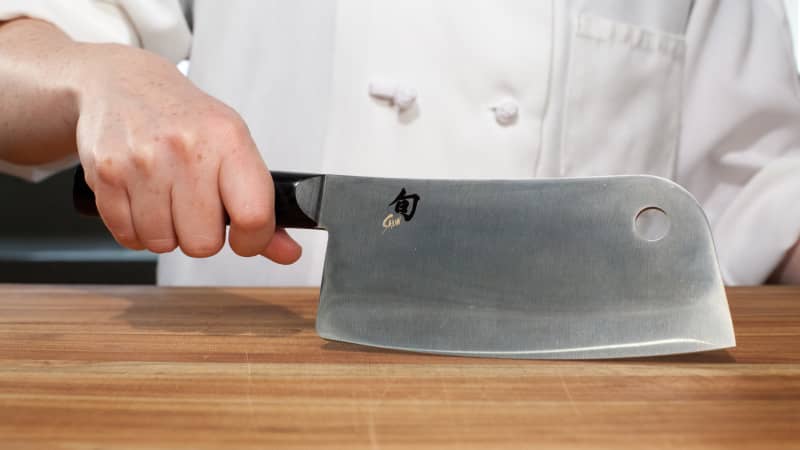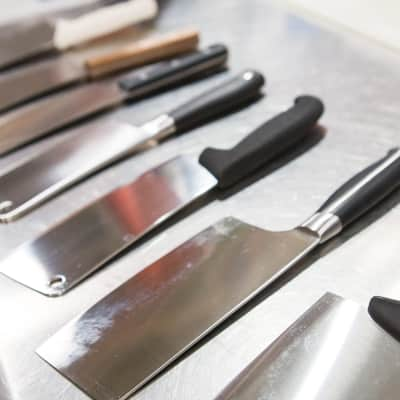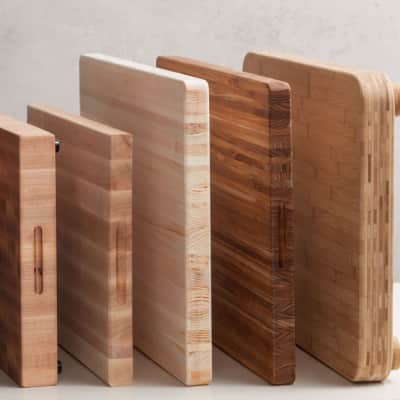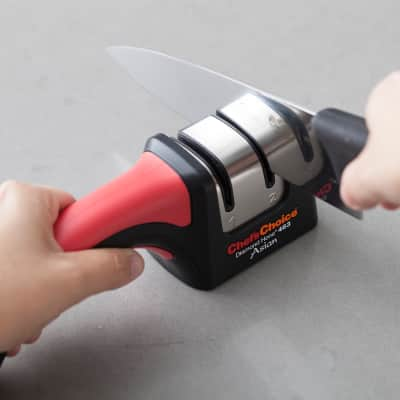It may take a little practice to gauge just how much force you need to supplement the cleaver’s weight. Hopefully, you’ve applied just the right amount to split the food with a clean cut, but it’s fine if you need to slice through the last remaining bits of meat or poultry. If the cleaver gets stuck halfway through the bone, place your nondominant hand on the spine of the knife and apply pressure to drive the knife downward and finish the cut. You can try to hack through the same spot twice, but it’s difficult to land on the exact target again, so you may end up with mangled meat.
If the cleaved food is small enough, you can now use the flat of the cleaver to lift it off the cutting board and into your stock pot or other cooking vessel. Just make sure not to drag the edge of the blade against the board, as this can dull it.










